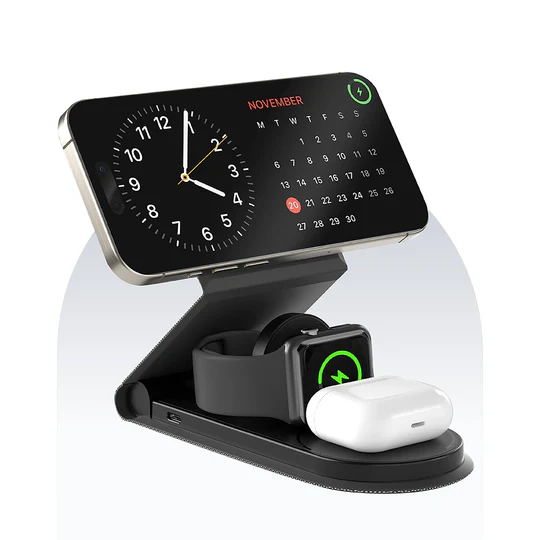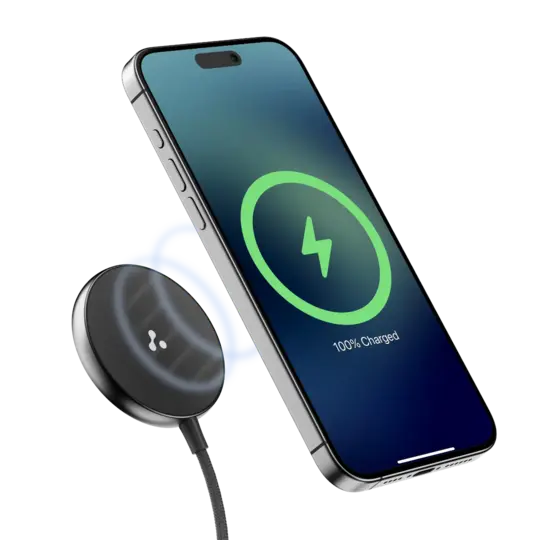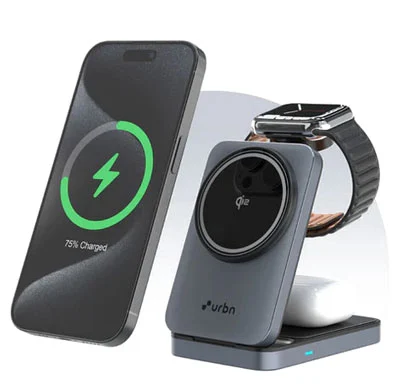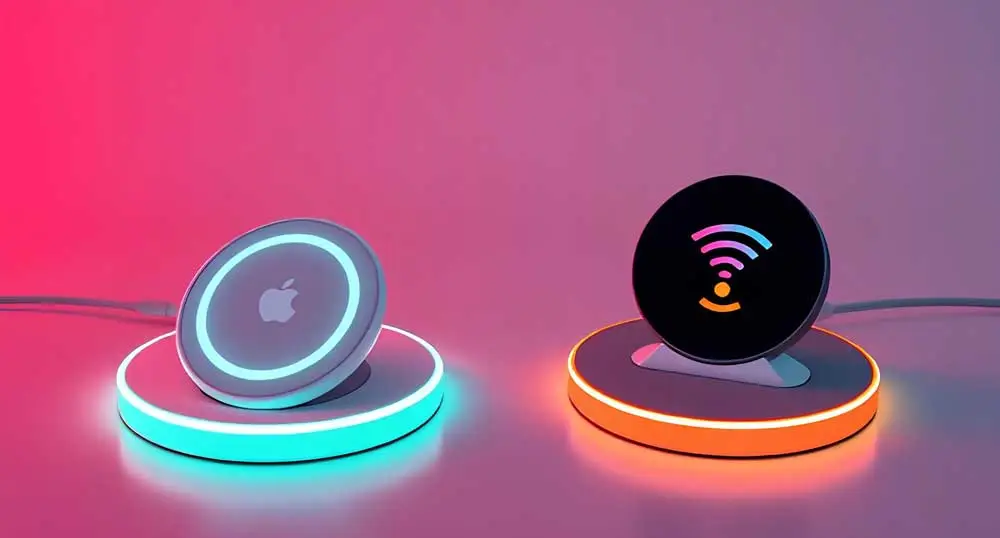At present, wireless charging has become a necessity of modern smartphones. It can easily charge a smartphone without a cable. Fans worldwide recognize MagSafe as an Apple innovation launched with the iPhone 12 devices. Many of you have been using MagSafe wireless charging technology. Does a MagSafe wireless charger truly need to be purchased for the purpose of wireless charging? You can also charge it with a Qi wireless charger instead of MagSafe. The following section presents a comparison between the techniques to determine their advantages over each other.
Understand wireless charging technology.
Before comparing MagSafe versus ordinary Qi wireless charging, you need to know how they work.
How does wireless charging work?
The Wireless Power Consortium operates under the Qi technology acronym (pronounced ‘chi’) for simple wireless charging sessions. The charging pad transmits power by electromagnetic induction to charge the smartphone battery.
Method of work:
- The charging pad creates a magnetic field.
- The phone’s receiver converts this energy into electricity.
- This power is used to charge the battery.
Advantages of wireless charging:
- Universal compatibility (works on any Qi supported Android and iPhone).
- No cable is required—just put the phone on the pad and it will start charging.
- Safe compared to wired charging (charging port is less likely to be damaged).
Common disadvantages of wireless charging:
- Slow Charging speed (5W to10W but some premium Android phones support up to 50W).
- Energy will be wasted if not properly connected.
- It has to be positioned properly for charging.
How does a MagSafe wireless charger work?
MagSafe is Apple’s magnetic wireless charging technology, which has been introduced since the iPhone 12 series. Compared to ordinary Qi charging, it ensures the correct position of the charging coil using magnetic alignment.
Method of work:
- The magnet inside the iPhone is connected to the charger.
- Proper alignment has to be done for effective energy transfer.
- MagSafe supports a maximum charging speed of up to 15W.
Advantages of MagSafe charging:
- Effective charging due to proper alignment.
- Fast charging up to 15W for iPhones.
- MagSafe wallet, stand, mount can be used together.
- There is no movement during charging due to the magnetic attachment.
- Compatible with various MagSafe accessories.
The disadvantages of MagSafe charging:
- Limited compatibility (only works on iPhone 12, 13, 14, 15, 16 series).
- Expensive (MagSafe charger price starts from ₹3,500).
- slower than fast charging.
- Long-term use can cause overheating.
MagSafe vs. normal wireless charging: the main differences
The charging speed
- MagSafe: Maximum of 15W (for iPhone).
- Typical Qi: 5W-10W (for iPhone) Some Android phones support up to 50W.
- MagSafe for iPhone and Qi for Android.
Magnetic Connectivity
• MagSafe: Yes, the accurate connection is ensured by the magnet.
• Simple Qi: No, depending on the location of the phone.
The winner is MagSafe
Compatibility
- MagSafe is only for the iPhone 12-15 series.
- Qi: Works with all Qi-supported devices.
Price
- MagSafe charger: ₹3,500 +
- Typical Qi charger: ₹1,000 +
Winner: General Qi (Affordable)
Which one is suitable for you?
Buy MagSafe if:
- You have an iPhone (from iPhone 12 to iPhone 16).
- You want to charge your device safely and reliably. You are traveling. You want the benefits of a magnetic connection.
Buy a good-quality Qi charger if:
- You have Android or other Qi-supported devices.
- You are budget conscious.
- You do not want to carry or use any extra accessories.
Final Verdict: What is best for you? MagSafe or Qi
If you are an iPhone user and you want convenient and stable charging, then MagSafe is a good investment. If you want an affordable and universally compatible option, then simple Qi charging is a good enough alternative.
Here are some of the best wireless chargers with trusted links

URBN 3 in 1 Magnetic MagSafe Charger

Ambrane AerosynQ 15W Qi-2 & Magsafe Wireless Charger

URBN Qi2 Certified 3-in-1 MagSafe Foldable MagTag Stand
Check out the best smartphone accessories.
For more related blogs, check out Technoob Blogs.
Have tech questions? Check out our FAQ page for expert answers and advice.

